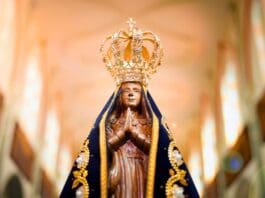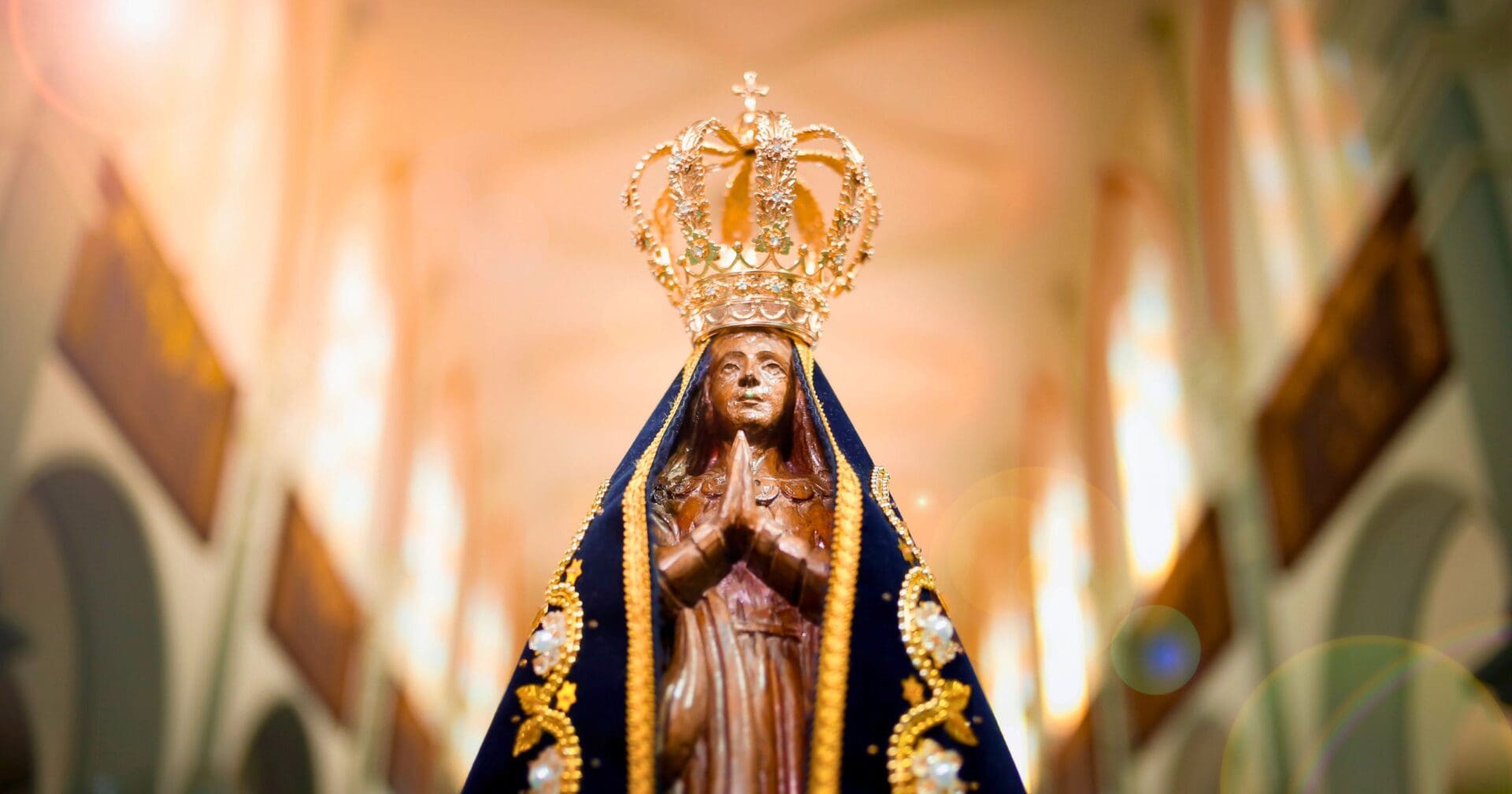
In October 1717, as the town of Guaratinguetá in Brazil was preparing a feast for a visiting noble, three local fishermen took to the waters, hoping to catch fish for the banquet. Given it was an unfavorable season for fishing, they beseeched the Immaculate Conception for assistance.
Despite their prolonged efforts, their nets remained empty. Just as they were about to surrender to their fate, an unexpected find transformed their day. With one throw, they retrieved a mud-covered terra cotta statue’s torso. Intrigued, they cast their nets once more, this time discovering the statue’s head. Upon cleaning, they realized they held a representation of the Immaculate Conception. They affectionately named it “Our Lady Aparecida,” translating to “Our Lady who appeared.” Reverently wrapping the statue, they tried their luck at fishing once more and were astounded to haul in an abundance of fish, nearly capsizing their boat.
This statue soon became a symbol of hope and faith for many, as stories of miracles, attributed to the Blessed Mother’s intercession, began to spread. The reverence for Our Lady Aparecida grew, leading to the construction of a small prayer chapel. As devotees multiplied, a larger church was erected on Coqueiros hill, eventually leading to the birth of a village around it.
This church was designated a minor basilica in 1908. Recognizing the ever-increasing influx of pilgrims, a grander basilica was initiated in the 1950s. Today, this stands as the world’s second-largest Catholic place of worship, surpassed only by St. Peter’s Basilica, and remains the foremost Marian shrine. Honoring her significant presence, Our Lady of Aparecida is venerated as Brazil’s patroness, representing the heart and soul of the world’s most populous Catholic nation.
Photo credit: Sidney de Almeida / Shutterstock.com
The post Our Lady of Aparecida appeared first on uCatholic.
Daily Reading
The Sixth Day in the Octave of Christmas
Reading 1 1 Jn 2:12-17 I am writing to you, children,because your sins have been forgiven for his name’s sake. I am writing to you, fathers,because you know him who…
Daily Meditation
The Holy Family
Click here for daily readings Growing up, I had an aunt who loved Santa. No matter the season, there were Santa pictures and statues up around her house. It was…




